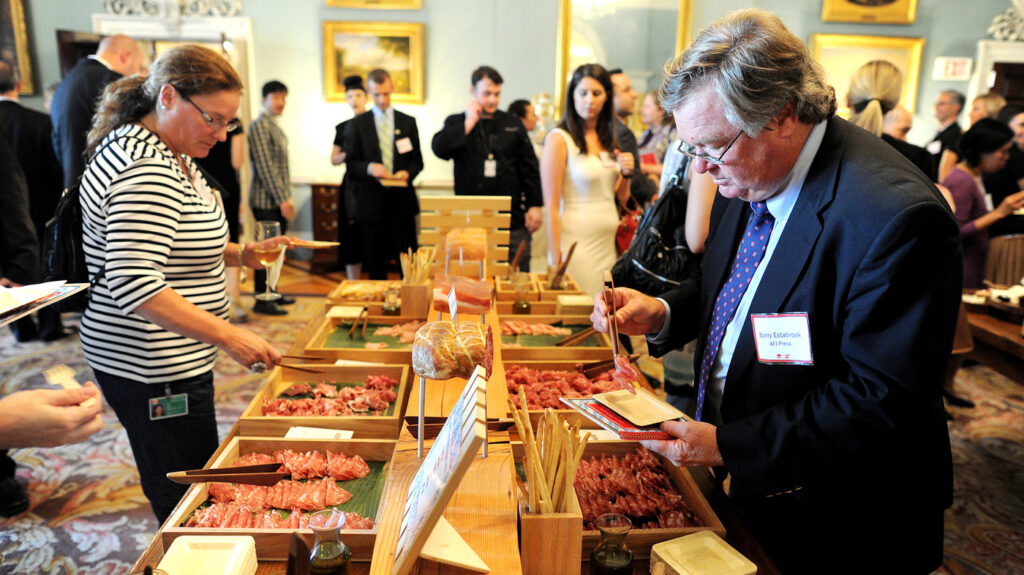Gastrodiplomacy is an act of public goodwill that represents reaching people’s minds and hearts through their stomachs. Countries can use food as a branding strategy to further the efforts of international diplomacy. Those who hold middle powers in government can increase their influence on an international scale by promoting the foods of their culture.
People often dismiss the merits of using food as a tool of diplomacy before understanding its implications. However, food has always provided an essential method of non-verbal communication. When government representatives come together to share a meal, certain customs surrounding food help to shape the interactions between them. The seating arrangement at the table and the venue chosen for the meal are two prime examples.
Everyone Has to Eat
World leaders often work around the clock when negotiating an important treaty. They spend many hours of the day together, and their time is often fraught with conflict. However, they cannot get through these intense negotiation sessions without eating. The most diplomatic nations recognize this and assign people to create menus that acknowledge one another’s culture.
In 2018, the leaders of North Korea and South Korea met for the first time in 11 years. Staff tasked with serving meals to Kim Jong-un and Moon Jae-in considered foods that would remind each of their childhood home. They served Kim Jong-un, North Korea’s leader, Swiss rosti to commemorate the time he spent in Switzerland attending school. Moon Jae-in enjoyed flat sea fish common to Busan, the hometown port city where he grew up.
Unification is the underlying goal of any state dinner. The representatives of one nation often cater to the tastes and traditions of the other nation as a way to come together over food.
Peking Duck is Popular Even Among Presidents
The Chinese have enjoyed feasting on Peking duck for centuries even though they understand the meal requires an extensive preparation process. Creating a meal of Peking duck starts with sourcing the perfect duck and allowing it to hang overnight.
After the duck has hung for at least 12 hours, the chef pumps air under its skin. This process helps to extract as much fat as possible during the cooking process. Pumping air into the skin of the duck also ensures that the meat remains warm on the inside while the outer skin stays crispy. Chefs also coat the duck with sweet syrup and spice immediately after removing it from the hanging rack.
The next step in the cooking process is to place the duck in an oven that contains fruit wood. Once it has finished cooking, the chef takes the duck out of the oven and carves it in front of dinner guests. Each person seated at the table receives small pieces of duck skin with meat attached, flour pancakes, hoisin sauce, and scallions.
Chinese diplomats served President Richard Nixon a meal of Peking duck during his visit in 1972. Americans back home watched Nixon on television and soon began searching for the same foods he ate in China.
George H.W. Bush was also a fan of Peking duck during his 12 years as president and vice president. He loved the meal so much that he ordered it more than 50 times at the Peking Gourmet Inn located in Falls Church, Virginia. The fact that their own presidents loved Peking duck has helped Americans have a more sympathetic view of China.

